Arizona is renowned for its diverse snake population, making it one of the prime locations for snake enthusiasts and researchers alike. With about 43 species, including venomous snakes, Arizona has one of the highest concentrations of venomous snakes in the United States. While other states may surpass Arizona in total snake numbers, the sheer variety and potency of the snakes found here make it a unique ecosystem to explore.
Given Arizona’s vast landscape and popularity as a tourist destination, it’s essential to be aware of the snakes one might encounter. From the depths of the desert to the rugged canyons and serene lakeshores, various habitats provide homes to these fascinating reptiles. Whether it’s the iconic Western Diamondback rattlesnake or the elusive Arizona Coral Snake, understanding the habits and habitats of these creatures is crucial for both residents and visitors alike.
This article compiles the 43 most common snake species found in Arizona, including many venomous ones, to help you identify and prevent encounters effectively.
Different Types of Snakes in Arizona
Lyre Snake
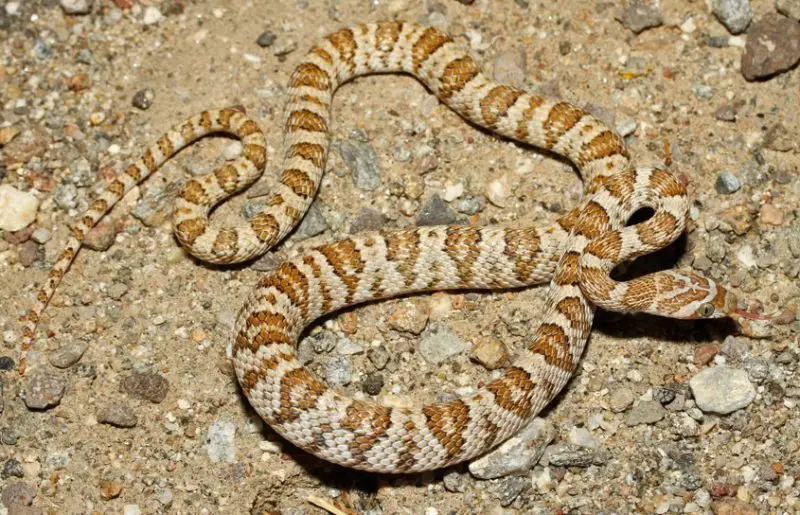
The Lyre Snake, scientifically named Trimorphodon biscutatus, is a non-venomous colubrid species found in the southwestern United States, including Arizona. It is identified by its slender body and unique lyre-shaped marking on its head, which gives it its name. With its varying shades of brown and gray, it blends well into its rocky habitat. Despite its intimidating appearance, it poses no threat to humans and primarily feeds on small reptiles and insects.
Tiger Rattlesnake
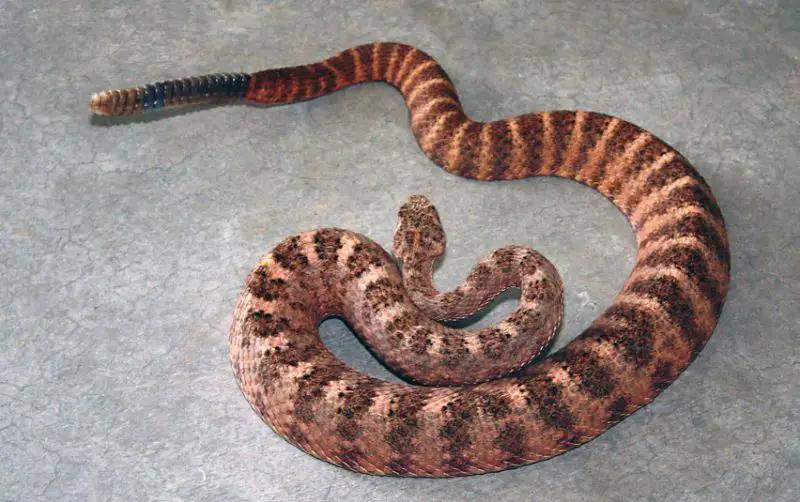
The Tiger Rattlesnake, scientifically referred to as Crotalus tigris, is a venomous pit viper species found in the southwestern United States, including Arizona. It is characterized by its vibrant yellow and black striped pattern, reminiscent of a tiger’s markings, hence its name. Growing to a length of three to four feet, it commands attention in its desert habitat.
Great Basin Rattlesnake
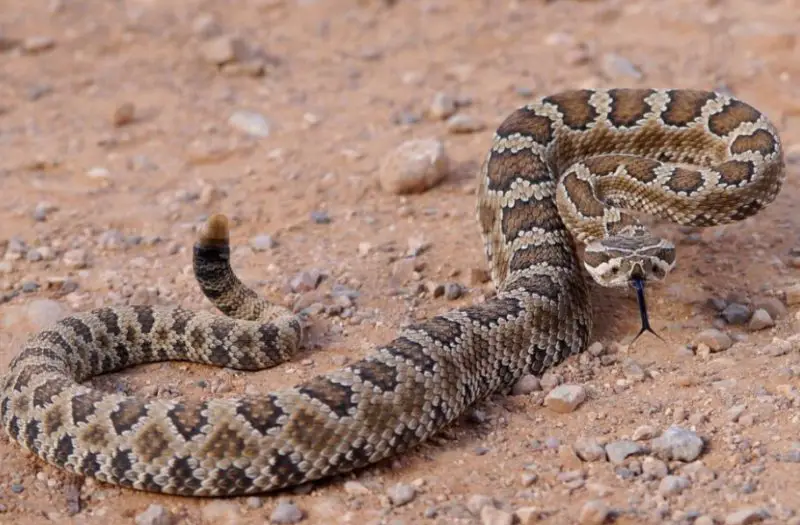
The Great Basin Rattlesnake, scientifically termed Crotalus oreganus lutosus, is a venomous pit viper species native to the Great Basin region of the western United States, including parts of Arizona. It is recognized by its diamond-shaped patterns and rattles at the end of its tail. With its varying shades of gray to brown coloration, it blends well into its rocky habitat.
Arizona Black Rattlesnake
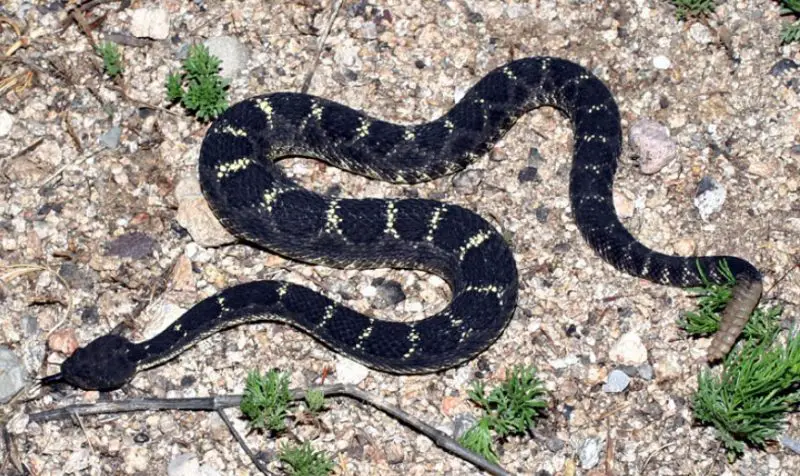
Grand Canyon Rattlesnake
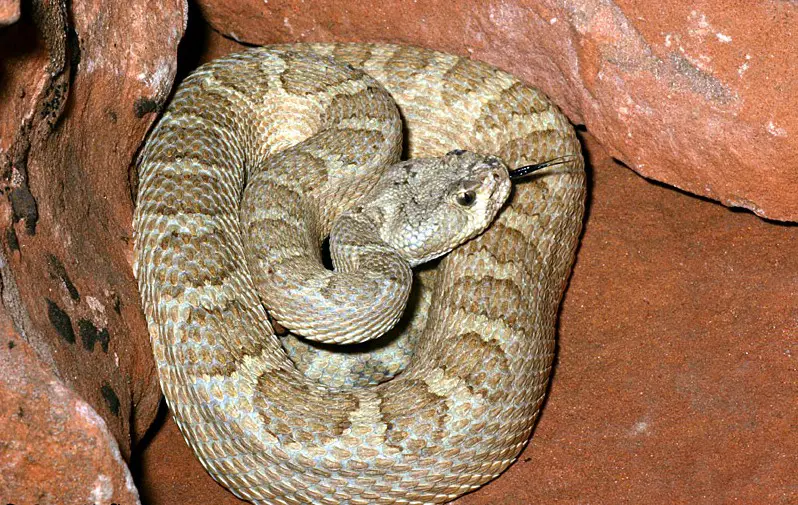
The Grand Canyon Rattlesnake (Crotalus oreganus abyssus) is typically three to four feet long, displaying colors from brown to pink. Its patterns, marked by blotches or bands, distinguish it. Exclusive to the Grand Canyon region, it favors rocky habitats, avoiding humans. Despite its reclusive nature, it possesses venom, emphasizing caution.
Sidewinder Rattlesnake
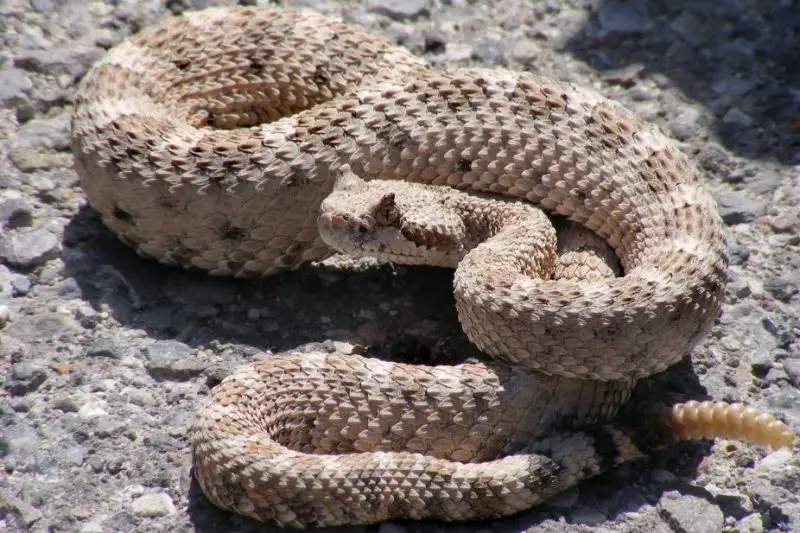
The Sidewinder Rattlesnake, scientifically known as Crotalus cerastes, is a venomous pit viper species native to the southwestern United States, including Arizona. It is recognized by its unique sidewinding locomotion, which allows it to navigate sandy desert habitats efficiently. With its distinctive horned scales above its eyes and light coloration, it is well adapted to its arid environment.
Tropical Vine Snake
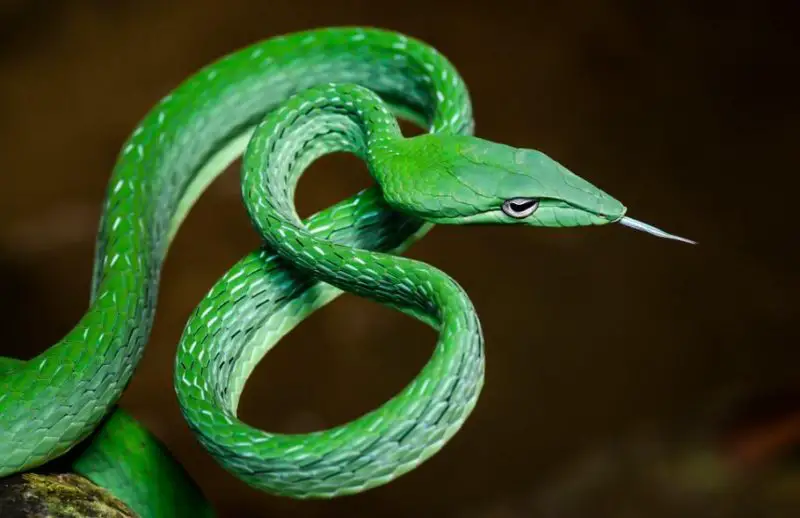
Mexican Vine Snake
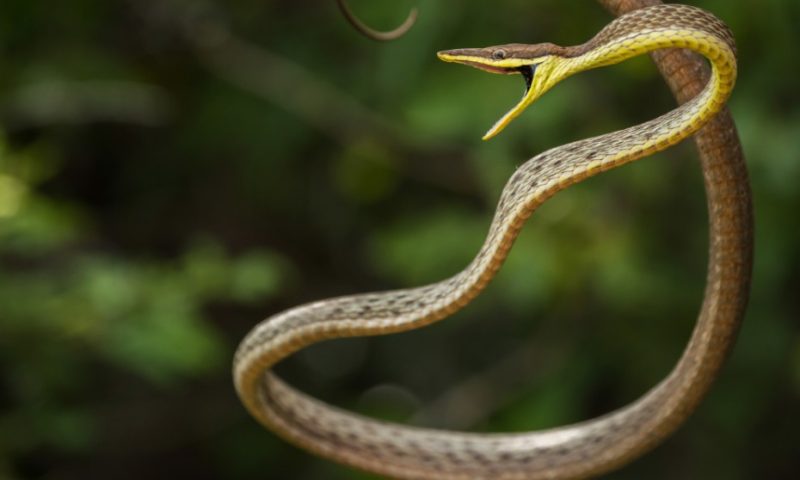
The Mexican Vine Snake, scientifically referred to as Oxybelis aeneus, is a non-venomous colubrid species native to Mexico and parts of the southwestern United States, including Arizona. It is identified by its slender body and vibrant green coloration, which help it blend seamlessly with foliage. Despite its appearance, it poses no threat to humans and primarily feeds on small prey like lizards and birds.
Arizona Coral Snake
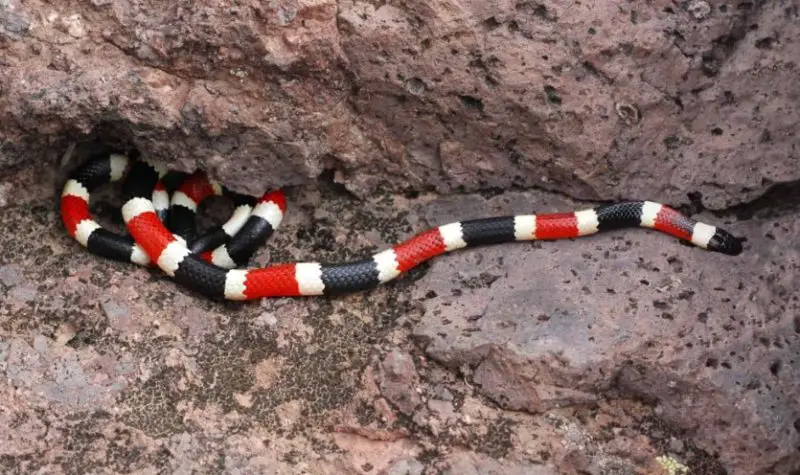
The Arizona Coral Snake, scientifically known as Micruroides euryxanthus, is a venomous elapid species native to the southwestern United States, including Arizona. It is easily recognizable by its vibrant red, yellow, and black bands, which serve as a warning signal to potential predators. Despite its small size, it possesses potent venom, making it potentially dangerous to humans. Encounters with the Arizona Coral Snake are rare, but caution should be exercised if one is encountered in the wild.
Western Hognose Snake

The Western Hognose Snake, scientifically named Heterodon nasicus, is a non-venomous colubrid species native to North America, including Arizona. It is characterized by its upturned snout, giving it a distinctive “hognose” appearance. Despite its intimidating behavior, such as puffing up its body and hissing loudly, it is harmless to humans. The Western Hognose Snake primarily feeds on frogs, toads, and small rodents. Its unique features and behaviors make it a fascinating species to encounter in the wild.
Long-nosed Snake
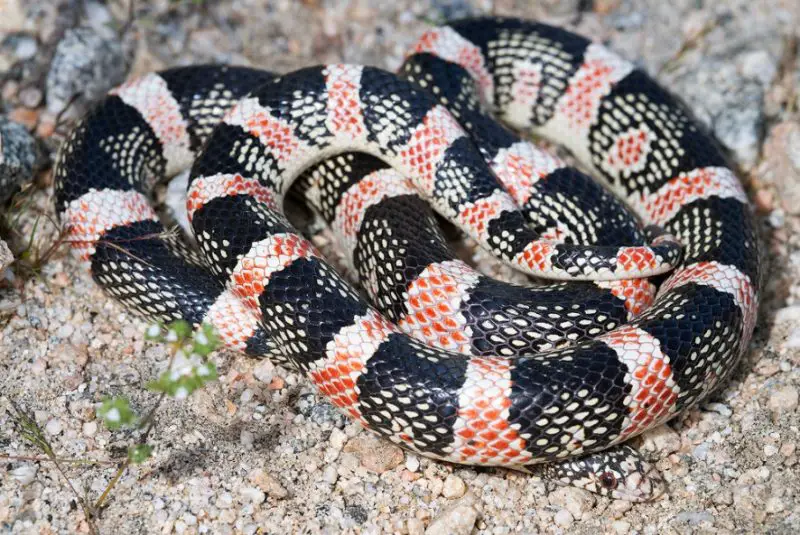
The Long-nosed Snake, scientifically known as Rhinocheilus lecontei, is a non-venomous colubrid species native to the southwestern United States, including Arizona. It is recognized by its long, pointed snout, which gives it its name. With its reddish-brown body and distinctive pattern of black and cream-colored bands, it is easily identifiable in its habitat. Despite its appearance, the Long-nosed Snake is harmless to humans and primarily feeds on small rodents, lizards, and other snakes.
Spotted Leafnose Snake
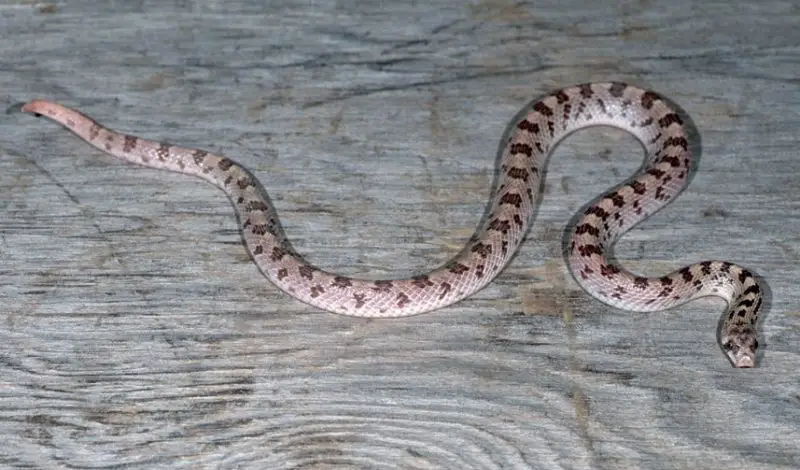
The Spotted Leafnose Snake, scientifically termed Phyllorhynchus decurtatus, is a non-venomous colubrid species native to the southwestern United States, including Arizona. It is identified by its unique spotted pattern along its body and its slender form. Despite its appearance, it poses no threat to humans and primarily feeds on small rodents and insects.
Sonoran Gopher Snake

The Sonoran Gopher Snake, scientifically referred to as Pituophis catenifer affinis, is a non-venomous colubrid species native to the Sonoran Desert region of the southwestern United States, including Arizona. It resembles the Gopher Snake but is adapted to desert habitats. With its large size and distinct pattern of dark blotches on a lighter background, it is easily recognizable. Despite its appearance, the Sonoran Gopher Snake is harmless to humans.
Saddled Leafnose Snake
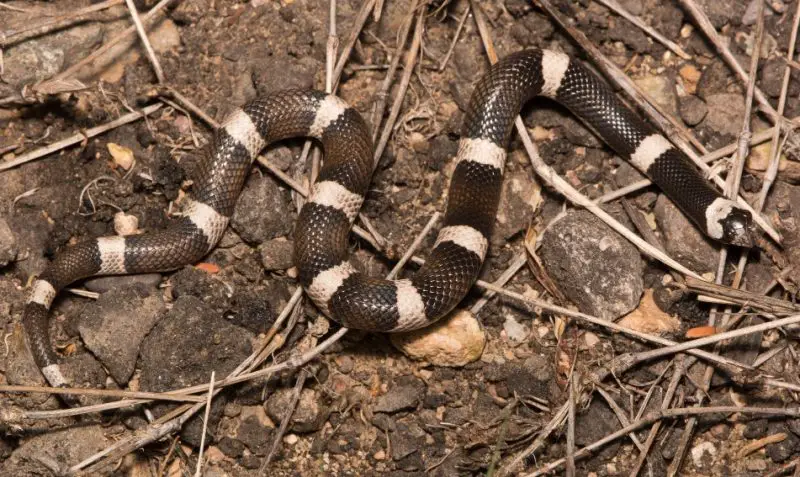
The Saddled Leafnose Snake, scientifically known as Phyllorhynchus browni, is a non-venomous colubrid snake species native to the southwestern United States, including Arizona. It is recognized by its distinctive saddle-shaped markings along its back, which give it its name. With its slender body and unique pattern, it is easily recognizable in its habitat. Despite its intimidating appearance, the Saddled Leafnose Snake is harmless to humans and primarily feeds on small rodents and insects.
Desert Rosy Boa Snake
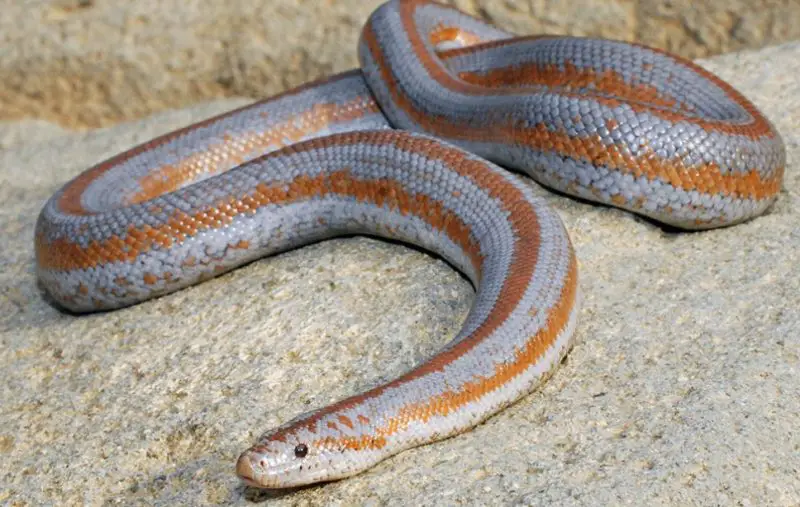
The Desert Rosy Boa Snake, scientifically known as Lichanura trivirgata gracia, is a species found in Arizona’s arid regions. Identified by its beautiful pattern of reddish-brown and cream-colored scales, it stands out in the desert landscape. Despite its intimidating appearance, it is non-venomous and poses no threat to humans. Primarily feeding on small rodents and lizards, it plays a crucial role in maintaining the balance of the desert ecosystem.
Ground Snake
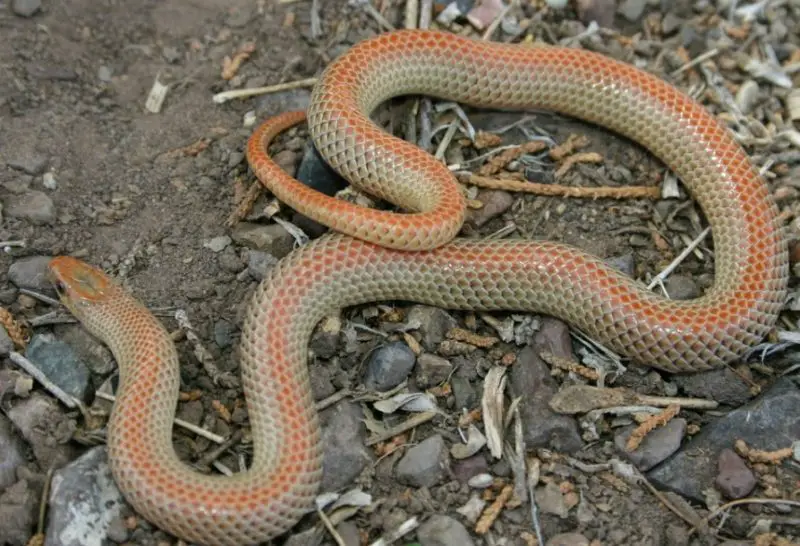
The Ground Snake, known scientifically as Sonora semiannulata, is a non-venomous colubrid species native to the southwestern United States, including Arizona. It typically has a gray or brown coloration, allowing it to blend seamlessly with its desert environment. With its small size and secretive nature, it often goes unnoticed by humans. Despite its inconspicuous appearance, the Ground Snake plays a vital role in the ecosystem by controlling populations of small rodents and insects.
King Snake
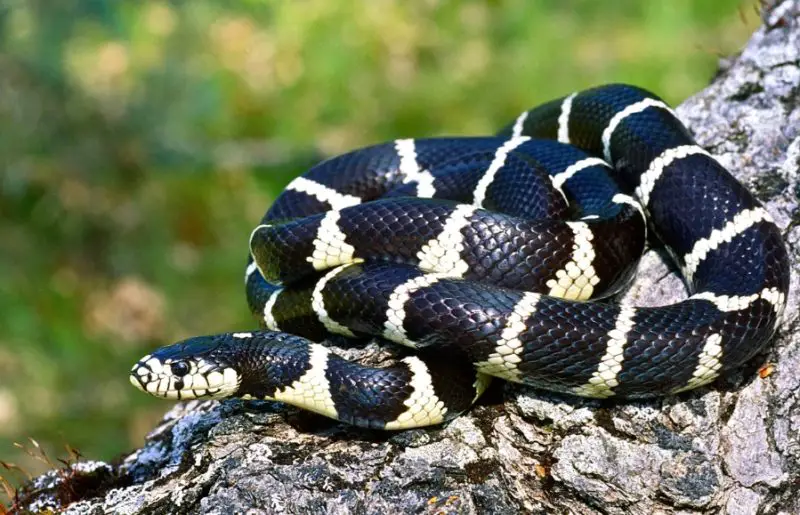
The King Snake, scientifically referred to as Lampropeltis spp., encompasses several species found across North and Central America, including Arizona. They are renowned for their distinctive pattern of bold black and white bands, resembling that of venomous coral snakes. However, King Snakes are non-venomous and play a vital role in controlling rodent populations. With their impressive length and striking appearance, they are easily recognizable in their habitats, often commanding attention from observers.
Glossy Snake
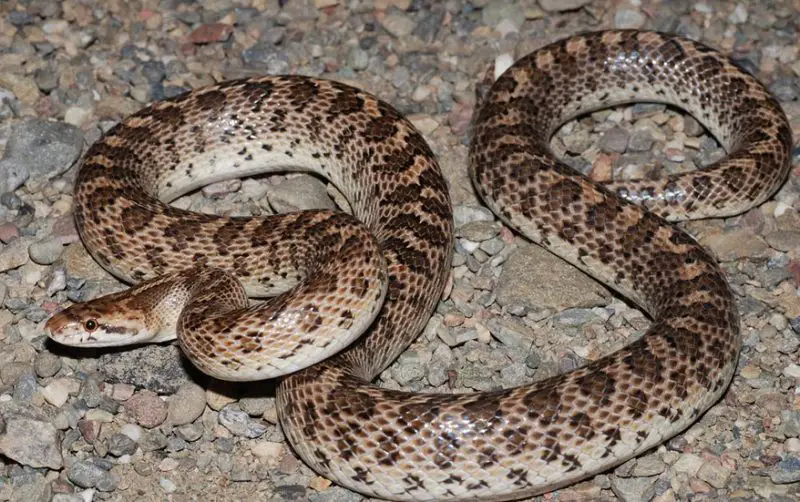
The Glossy Snake, scientifically termed Arizona elegans, is a non-venomous snake species found in the southwestern United States, including Arizona. It derives its name from its shiny, glossy scales and is known for its varying shades of brown coloration. With its slender body and distinctive appearance, it is easily recognizable in its habitat. Despite its intimidating appearance, the Glossy Snake is harmless to humans and primarily feeds on small mammals, reptiles, and other snakes.
Gopher Snake
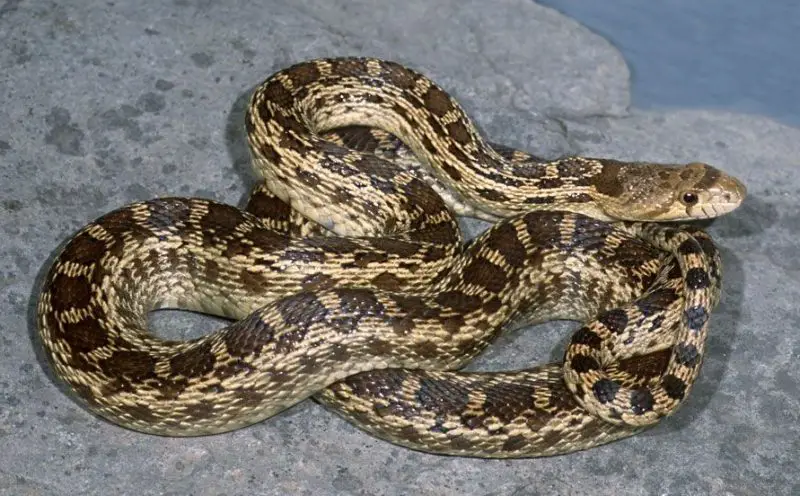
The Gopher Snake, scientifically known as Pituophis catenifer, is a non-venomous colubrid snake species native to North America, including Arizona. Recognizable by its large size and distinct pattern of dark blotches on a lighter background, it is often mistaken for a rattlesnake due to its defensive behavior, such as hissing and flattening its head. Despite its appearance, the Gopher Snake is harmless to humans and plays a crucial role in controlling rodent populations in its habitat.
Desert King Snake
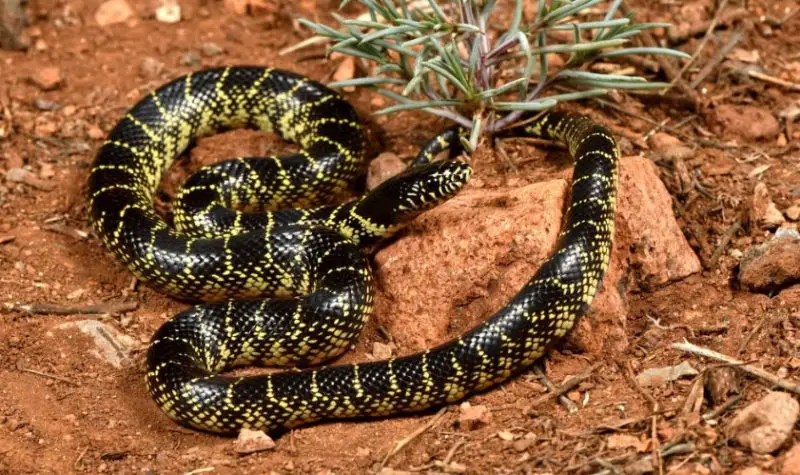
The Desert King Snake, also known as Lampropeltis getula splendida, is a non-venomous snake species found in the southwestern United States, including the deserts of Arizona. It is characterized by its impressive length and striking black-and-white banded pattern, which often resembles that of the venomous Coral Snake. However, unlike the Coral Snake, the Desert King Snake poses no threat to humans and primarily feeds on small rodents and reptiles.
Common King Snake

The Common King Snake, scientifically known as Lampropeltis getula, is a widespread species found in Arizona’s diverse landscapes. Identified by its glossy black body with white or yellow bands, it resembles the venomous Coral Snake, providing protection from predators. Non-venomous and docile, it primarily preys on rodents and other snakes, including venomous species.
Coachwhip Snake
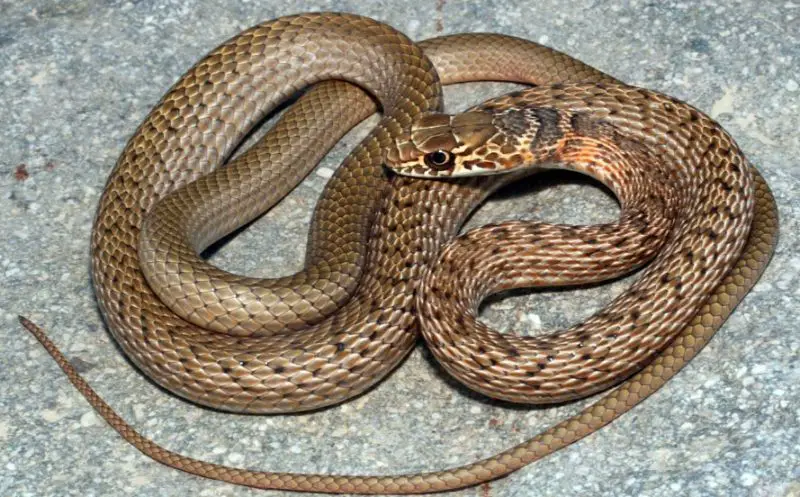
The Coachwhip Snake, scientifically known as Coluber flagellum, is a striking snake species found in Arizona’s desert habitats. Recognized by its long, slender body and whip-like tail, it can reach lengths of up to seven feet. With a coloration ranging from tan to reddish-brown, it camouflages well in its environment. As a fast and agile predator, it preys on small mammals, birds, and reptiles.
Checkered Garter Snake
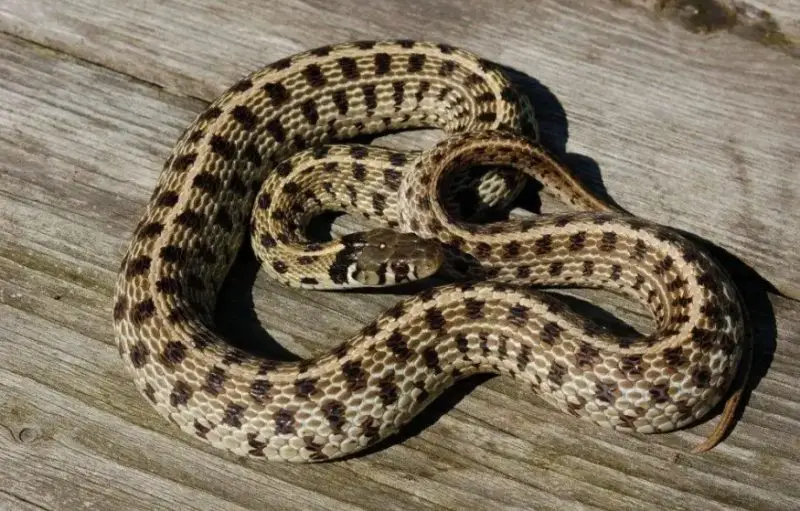
The Checkered Garter Snake, scientifically known as Thamnophis marcianus, is a common snake species found in various habitats across Arizona. Identified by its distinctive checkered pattern along its body, it typically reaches lengths of up to two feet. With colors ranging from olive green to brown, it blends well with its surroundings. It is non-venomous and docile; it primarily feeds on amphibians, fish, and small rodents.
Blind Snake
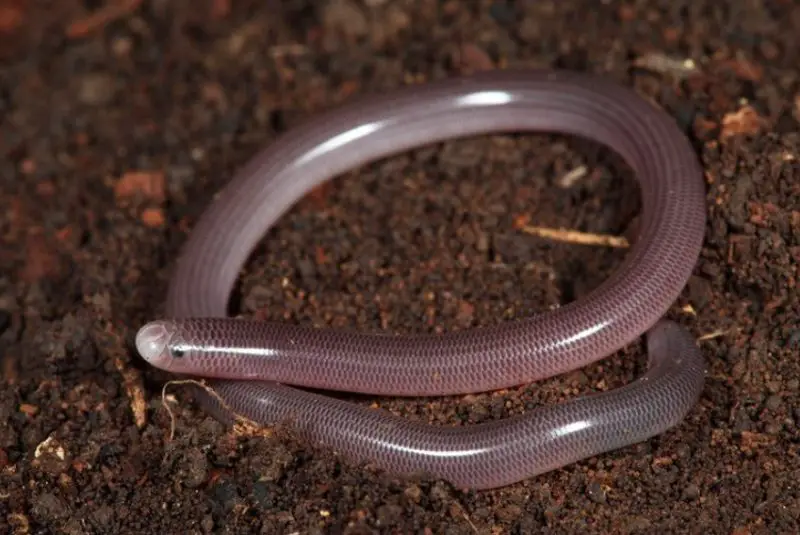
The Blind Snake, scientifically known as Leptotyphlops dulcis, is a unique and lesser-known snake species found in Arizona’s desert regions. Recognized by its small size, slender body, and lack of distinct eyes, it often resembles a worm or earthworm. Preferring sandy soils and arid environments, it primarily feeds on ants and termites. Despite its inconspicuous appearance, the Blind Snake plays a significant role in controlling insect populations and contributing to the desert ecosystem’s balance.
Black-Neck Garter Snake
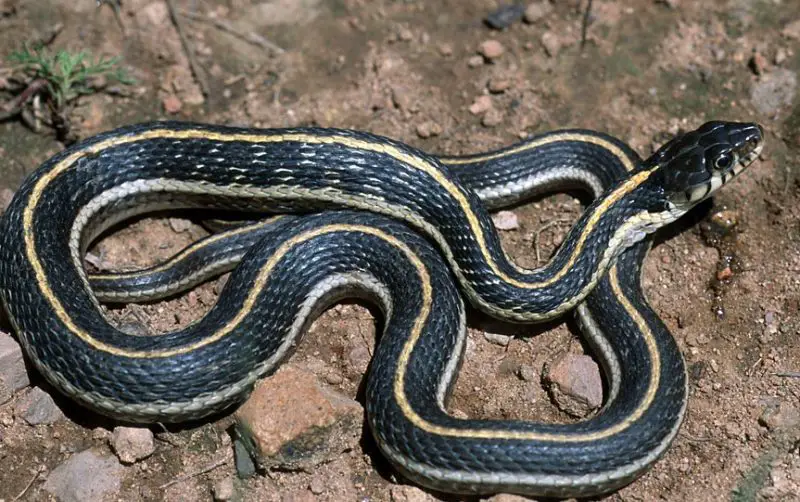
The Black-Neck Garter Snake, scientifically known as Thamnophis cyrtopsis, is a distinct snake species inhabiting Arizona’s diverse landscapes. Identified by its striking black neck and distinctive lateral stripes, it typically reaches lengths of up to two feet. With colors ranging from olive green to brown, it adapts well to various environments, including grasslands, marshes, and riparian areas. Non-venomous and docile, it primarily preys on amphibians, fish, and small mammals.
Patch-Nosed Snake


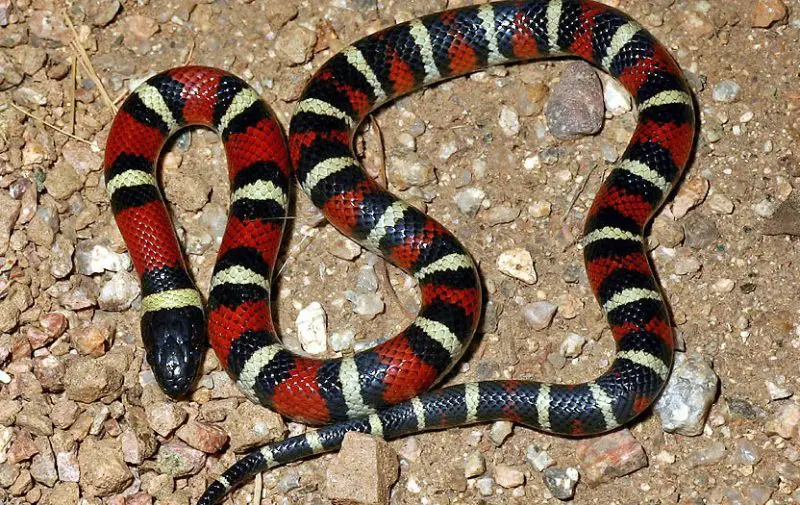
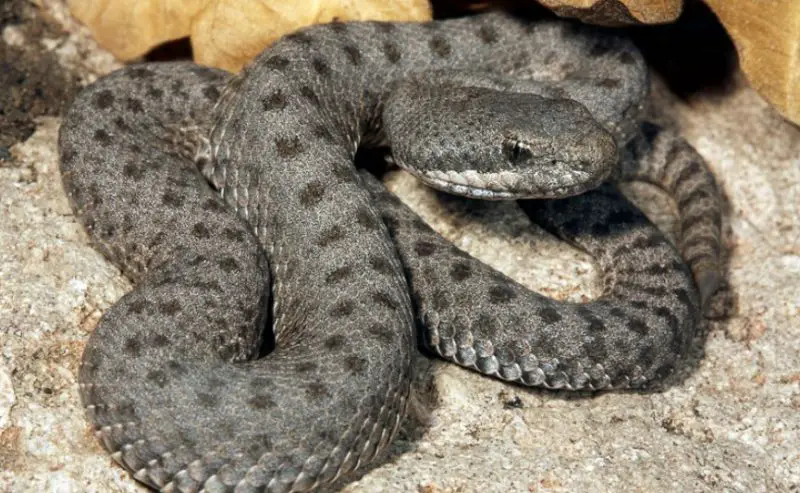
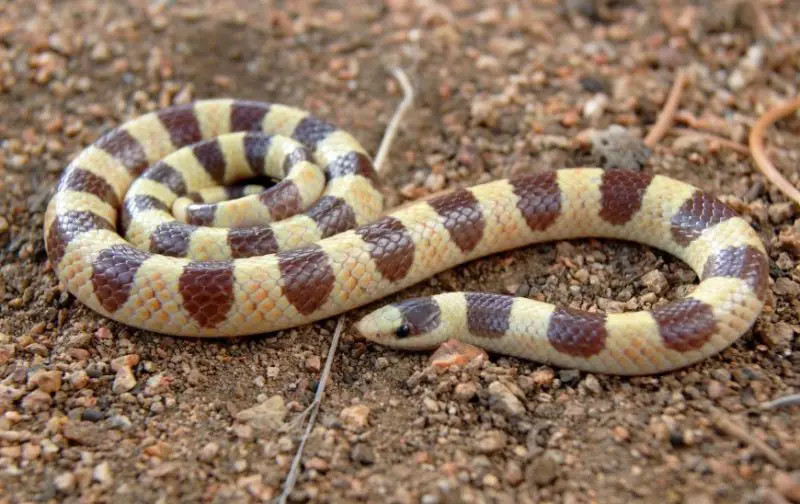
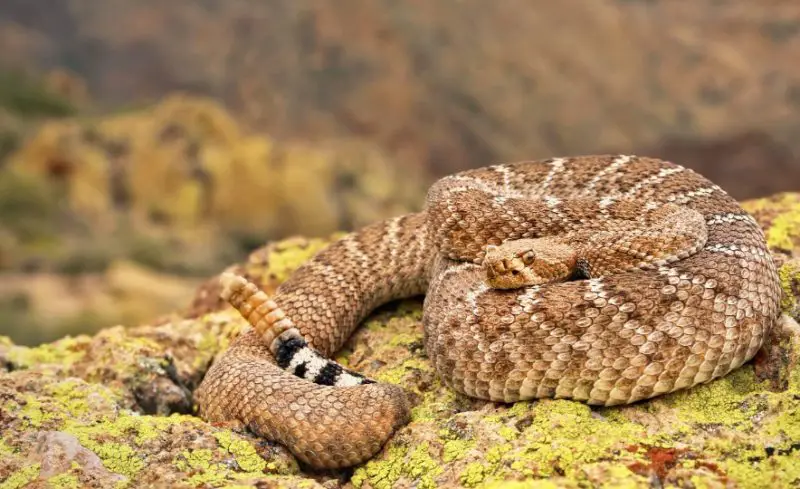


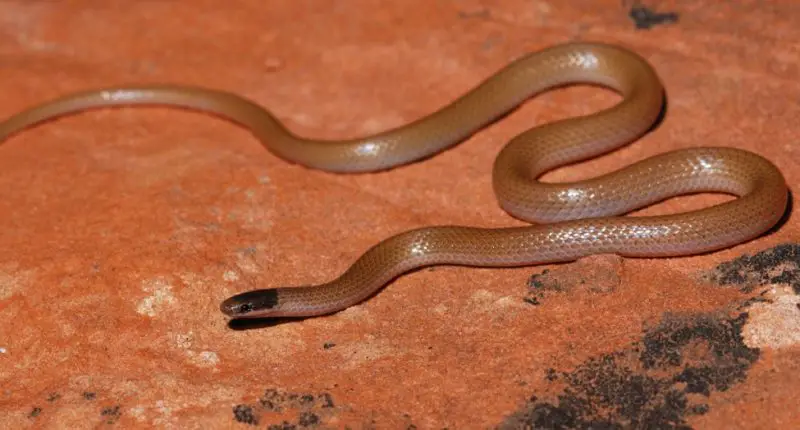
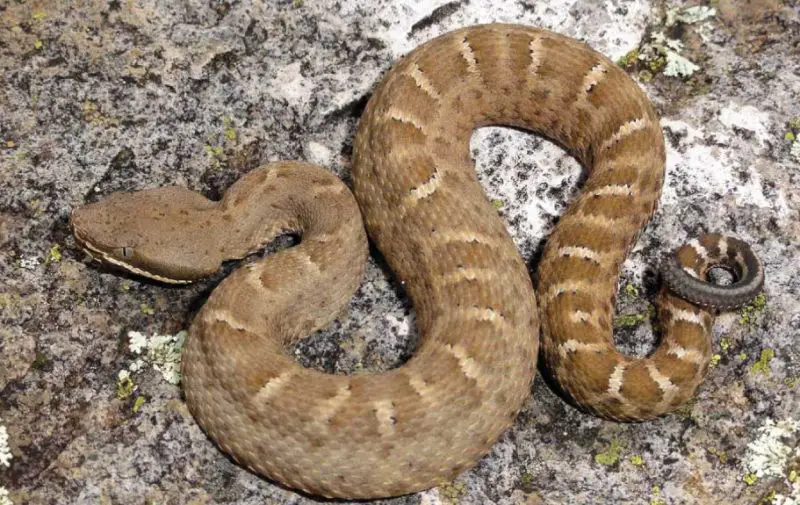
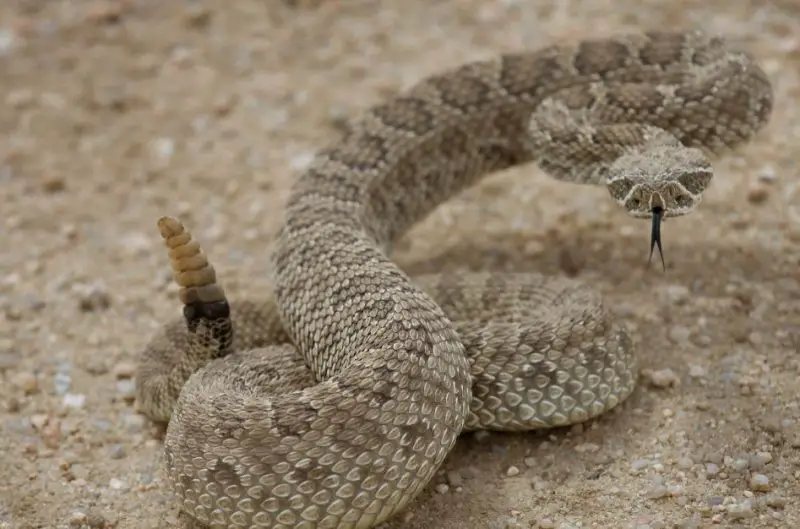
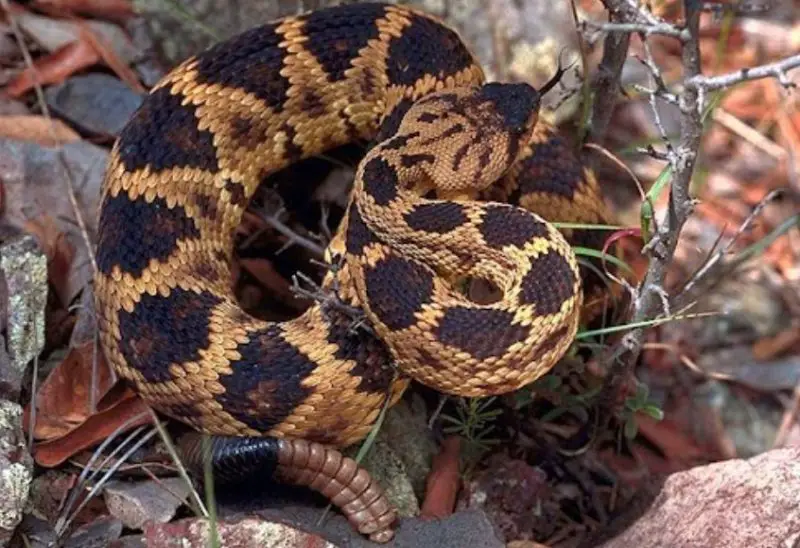
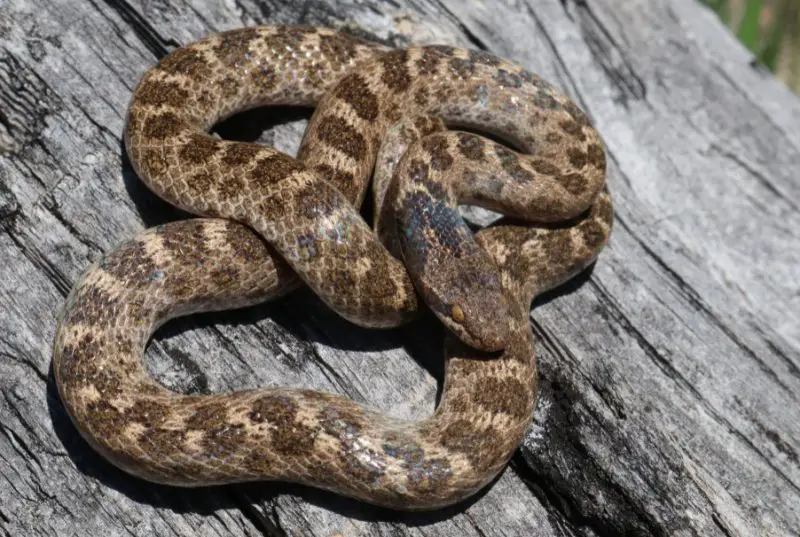
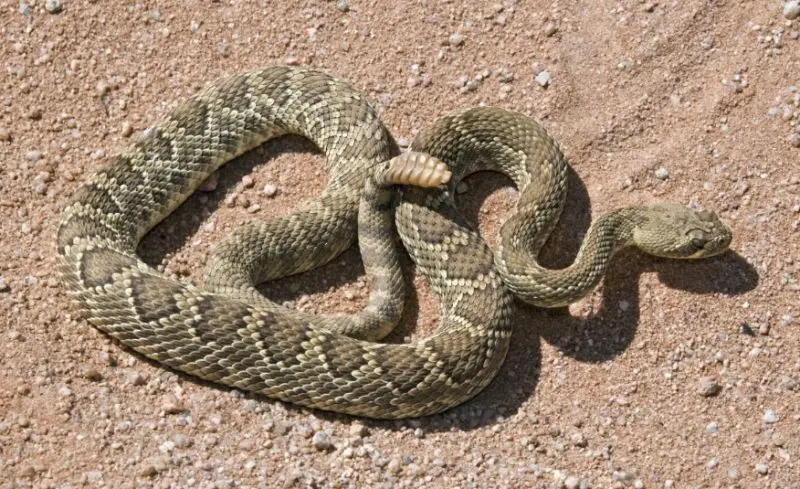




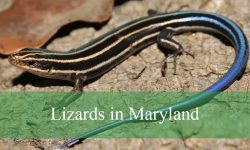

Looking for snakes that inhabit the white mountains. Just had a snake in my yard but couldn’t get google lens to identify it.